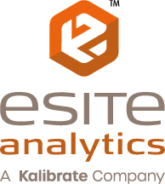In this post, we’re going to take a look at the retail model of the future, and how to do it today!
We’re talking about the process retailers use to select sites and optimize networks of stores. This method allows growing brands to remain relevant as consumer expectations evolve. As one industry executive said:
“Changing consumer shopping tastes and expectations are quietly transforming the retail industry. The shopping model of the near future is poised to look radically different from just a decade ago, and retailers that don’t keep pace with changing tastes are setting themselves up for a rude awakening, at best, or extinction.”
Retail modeling lets you predict future store performance and outcomes in a fast-changing landscape.
But there’s a little secret most site selection consultants won’t tell you:
Most retail models are biased, and by themselves incomplete.
If you want to achieve reliable sales forecasts, you have to use combinations of multiple models to reduce the potential for biases that can (and often do) impact results.
By using combinations of multiple models—instead of a single, subjective approach—you get a more complete picture of the potential sites that will perform well for your brand.
At eSite Analytics, we call this collective approach to retail modeling Ensemble Modeling™. Our ensemble models include a combination of different models, including:
- Analog
- Naïve Bayes
- Decision Tree
- Neural Networking
- Linear Regression
- Spatial Regression
- Logistic Regression Gravity
It’s a great way to get more reliable sales forecasts and better plan location-based messaging.
Interested in learning more? Ask us for a 15-minute demo of eSite Analytics’ exclusive Ensemble Modeling™ approach.

